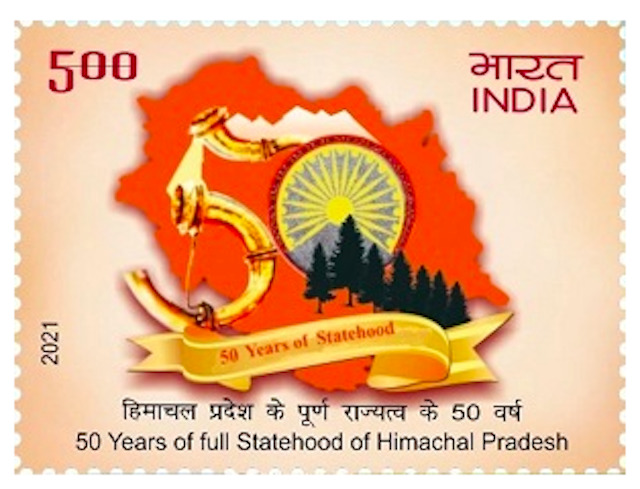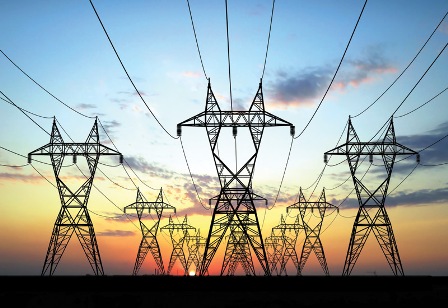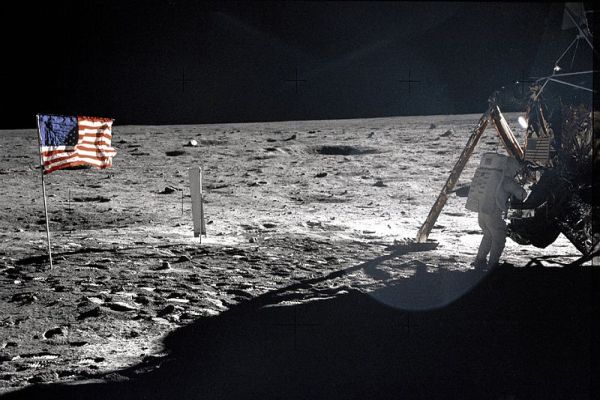
As Himachal Pradesh observes its 50th anniversary of achieving statehood on January 25, we may want to take a look at the struggle for its statehood that dates back to the period immediately after Independence. And as we do that, we may realise how ironic is the fact that the BJP government in the state has invited Amit Shah and J P Nadda to be the guests for this function at Shimla, when it was these very political forces that had opposed the formation of a full-fledged state.
It would be important to understand the trajectory of development of the state — which can be traced from the very beginning to meeting the Kerala standard in terms of human development index. These past five decades have made Himachal an impressive model of development for the other hill states. We will discuss the reasons behind that and the challenges that continue to pose a serious threat to its progress. But before that, it would be important to touch upon the historical background of the struggle and the determined efforts towards the formation of the ‘modern’ state, Himachal Pradesh.

Historical Background
We may not want to go too deep into the age-old history of the region which had been inhabited by various tribes or migrants like the Kassites (Khashas), Kols, Nags, Rajputs, and many others. But what deserves a mention is the struggle of the people for statehood, which was unflinchingly led by Dr. Y S Parmar, leader of the Prajamandal movement and who later became the first chief minister of the state.
Himachal Pradesh came into being on April 15, 1948, as a centrally administered territory following integration of 30 erstwhile princely states. With the passage of time and after witnessing many crests and troughs, it was categorised as a ‘C’ state in 1951. In 1956, there was a recommendation to merge it with Punjab put forth by the State Reorganisation Commission, but Himachal retained its identity and became a union territory. In 1963, the Assembly was revived and in 1966, new districts were merged into the state: Kangra, Shimla, Kullu, Lahaul-Spiti, the Nalagarh tehsil (part of the Ambala district until then), some parts of Una tehsil (part of the Hoshiarpur district until then) and Dalhousie (part of the Gurdaspur district until then). On January 25, 1971, Himachal Pradesh finally attained statehood.
Parmar continued to remain instrumental in framing policies and the direction of development in the state. His role in the two important movements earlier had helped him shape this trajectory for the state. The first movement was the Prajamandal movement which was for the integration of feudal states with the Indian union. The second one was the movement for the land reforms which was led by the Communist Party, but which was completely understood and usurped by Parmar while framing policies for the state. No big surprise that Himachal had one of the most effective land reforms in the country.
To go into the debate of statehood, some of Dr. Parmar’s speeches in the assembly are worth reproducing. In one of his interventions, he said, “Himachal was never created on account of any political expediency, but the government of India always knew that the country could not make progress unless the backward hilly areas were also given an opportunity to make progress and to improve their condition. This was possible only when a separate state was provided for such an area. They will have to form a separate state where the people may act according to their own traditions, culture, and customs. (April 5, 1956, speech delivered during the discussion on the Draft Bill of the State’s Reorganisation Act, 1956)”.
In another intervention, elaborating on the Prajamandal movement’s role, he had said; “The Himalayan Regional Council decided to launch ‘Satyagraha’, which started from Suket State, popularly known as Suket Satyagraha. The notice to launch this Satyagraha was served on February 16, 1948, and thereafter in a week’s time, three fourth of the Suket State was taken over by the Satyagrahis and in the long run, the Raja of Suket had to send a petition to the government of India. At that time, one thing was in view i.e., to do away with the existing autocratic(feudal) rule and to hand over the administration to the government of India and ensure that they would recognise the rights of the people. As a result of this move, Raja of Suket had to yield. The other rulers followed suit. Their applications were also received by March 8, 1948, and consequently, Himachal Pradesh came into existence on the 15th April 1948.” Dr. Parmar was very clear on the need to get rid of the feudal lords and the consciousness of feudalism. That is why he is termed as a ‘Left of Centre’ politician who shaped the future of the state.
1971 Onwards
It was a difficult task for the new state that hardly had resources to ensure rapid development. Industrial development seemed quite distant too due to the poor connectivity and near-absence of rail networks.
It would be pertinent to mention two phases of development in the state: from the 1970s to the early 1990s and post 90s.
The first phase saw massive doses of stimulus for the state. The major sectors that were targeted include land reforms, horticulture, education, electricity, road network, market intervention, health, animal husbandry, and employment. Private capital hardly existed then and there was no scope for investment as the returns for such capital were not evident. In such a situation, the state embarked on a model where the state became one of the principal investors in the social sector and infrastructure development.
Land Reforms
Massive land reforms were conducted across the state with strict implementation of the land ceiling. The ‘Nau Taur (Break the New Land)’ policy was implemented where land was distributed among the landless, especially Dalit residents. Five bighas (one acre) of land were given to all such landless families. The ‘land to the tiller’ slogan was effectively actualised. Surplus land was distributed amongst the tillers. This way, the much-needed asset was in the hands of the poor and the marginalised.
These reforms were effectively implemented through the Land Reforms and Tenancy Act, which ensured that the land-use change cannot be done. It was to ensure that the primary sources of employment, i.e., agriculture and horticulture remain with the people. For this reason, section 118 in the Act was incorporated which said that even if someone had been living for decades together in the state, they could not buy land unless they were an agriculturist. This was to ensure that the land remains with the ‘Himachalis’ and that too with those involved in agriculture.
Horticulture
Realising that the state does not have large tracts of land for cereal crops and only 10% of the total landmass is available for agriculture/horticulture purposes, the state focussed on horticulture development. Two universities were opened: one for horticultural research and another for agricultural research. Their extension counters were established to ensure a wider reach. According to some anecdotes, Parmar, who was the CM then, would take long walks along with the horticulture officers around villages and encourage the villagers to plant apple crops. He would himself carry those saplings on his back. Apart from implementing the market intervention, warehouses were bought in large cities like Mumbai and Chennai to ensure that the crop can be sold there. Today, the apple economy is worth more than Rs 5,000 crore with a large belt of the region deriving subsistence from it.
Education
Schools were opened in the remotest areas with not just the required infrastructure but while also ensuring that there is the adequate teaching staff. Jobs were created and educational institutes were opened for teachers’ training.
Health
Health was another important area where the state’s performance was recognised. Health centres were opened in remote areas with required medical and paramedical staff. In the Human Development Report, the state was recognised as one of the states better equipped to mitigate the health challenges. Life expectancy in Himachal Pradesh is higher than the national average; the infant mortality rate is low. The state also boasts of a sharp decline in crude death rate and a high percentage of vaccination and other interventions. Simultaneously, health education infrastructure has also been developed.
Electricity
In a short period of nearly 10 years from the formation of the state, there was nearly 100% electrification of the households in Himachal Pradesh. This is easier said than done. Because unlike the plains, in the hilly states like Himachal, the population density is very low and for a house, which is on a hilltop, the same infrastructure would be required that would otherwise suffice for nearly a hundred houses. For power generation as well, the state was able to harness hydropower and build transmission lines.
Employment Generation
To ensure that this large social infrastructure is developed, human resources was one of the most important elements. For example, in the state electricity department, more than 50,000 workers, employees were employed in the 80s. Likewise, there was massive job creation in education, health, and other social infrastructure sectors.
But the point is how could this be achieved? The government did not have all of the required massive resources; so how was all this financed? This was done with help from the Centre. The Centre placed the state in a special category state and remittances were provided adequately. There would definitely have been a fiscal deficit, but this was ably mitigated with the generous help from the Centre.
Post -90s Period
However, after the 1990s, rather in the late 1990s, this arrangement had to go and could not have worked out owing to the shift in fiscal policies of the Centre. Its new path of development was what was called a ‘strong fiscal discipline’. It meant that the states would have to generate their own resources and that the fiscal deficit of the state should not surpass 3.5% of their SGDPs. Now, what would it mean for a state like Himachal Pradesh which was highly dependent on the Centre?
The state was forced to accept the FRBM (Fiscal Responsibility Budgetary Management Act), which asphyxiated the ability of the state government to perform and restricted its capacity to spend. The state governments were supposed to remain in this framework and ensure that their spending does not increase the stipulated percentage.
This severely affected the ability of the government and therefore, a novel way had to be adopted. The state governments, in their annual budgets, curtailed the non-plan expenditures. But how could they do that? Successive governments, led by both Congress and BJP, stopped filling vacant posts in almost all the departments and a large number of functioning posts were declared ‘surplus’. In the late 90s, in just one stroke, more than 30,000 posts in the Education Department were scrapped. Likewise, all the departments were targeted and systematic pruning of these departments was done.
Take for example the state electricity board. In the late 80s when there were just six lakh consumers with the board, the department had a workforce of nearly 45,000. Now, by the year 2019, when there were 22 lakh consumers the workforce has shrunk to nearly 13,000. This is the story of almost all government departments.
Abject Privatisation
The other way and form of mitigating this challenge have been privatisation of government utilities. The health sector is a key example. With hospitals partially privatised, Group IV, III workers are outsourced to different agencies with no job guarantee. Rogi Kalyan Smithis (RKS) are formed at all the hospitals, which then hire doctors and other staff members. Outsourcing is the norm in almost all departments. Another mechanism of reducing the fiscal deficit is providing employment on a contract basis. The Transport Department hires drivers and conductors on a contract basis by paying them a meager sum of Rs 8,000 per month; whereas, a regular counterpart would be getting Rs 60,000.
There are innumerable examples of privatisation of services that earlier used to be the mandate of the government. The quality of the services has also been severely hit because of the reduction in human resources, outsourcing, and privatisation. For example, when it snows and the electricity supply is disrupted because of broken wires, at times, it takes several weeks to restore electricity. Because human resources are very limited.
The very idea of being a ‘Himachali’ is also linked to land entitlements. I remember when Uttarakhand was being carved out, the biggest challenge had been the reversal of the land laws to ensure that the land remains with the Uttrakhandis and does not go into the hands of the land sharks. However, the BJP started it in Himachal and even Congress allowed rampant dilution of Section 118 of the Land Reforms and Tenancy Act allowing the land sharks to enter Himachal and rob the small and marginal peasants.
Political Impact
Interestingly, this also has had a strong political impact in the state. Politically speaking, since the 1990s, when this paradigm shift was thrust upon the state, no party i.e., the BJP or Congress, has been able to win the elections for two consecutive terms. There have been alternate governments either led by Congress or the BJP. Primarily, because with a continued period of intervention, political consciousness is developed among the people.
Himachal Pradesh is perceived as the largest and the principal source of help employment, health, education, etc. This then also leads to the expectation that those in power fulfill the responsibility of mitigating the problems of the populace. The biggest problem or challenge that has been developed over the years is unemployment. “This has to be addressed by the state” is a strong consciousness that persists among the people and since the state government does not have the capacity to address it, the people find another alternative and thus swing from the BJP to Congress.
Anti-Himachal BJP?
The point from where I started is that the BJP, which was against the very idea of the formation of Himachal Pradesh, would be leading the 50 years celebration in Shimla. I bring it back to the fore. Why? Because, the Jana Sangha, the predecessor of BJP during the late 60s and early 70 — when statehood was imminent — had led a parallel movement against it. They had coined slogans like “Statehood Maro Thood Very Good (Kick the Statehood)” and “Jana Bhai Jana Asan Punjab Wapis Jaana (We have to merge with Punjab)”. For the Congress, which has now metamorphosed into a party alien to what it was in the 70s, one can say that at least, it was not against the idea of statehood. Parmar, when he left his office of the chief minister, took a state transport bus and went to his village with a small suitcase. Such an era of leaders is gone. That was the inception and the spirit with which the state was carved out because of sheer aspirations and sentiments of the people which Parmar referred to in his speeches. But for now, neither there is an aspiration nor the sentiment to conserve what constitutes “Himachal”.
Former deputy mayor Shimla.
National convenor, NCU, National Coalition for Inclusive & Sustainable Urbanisation.



